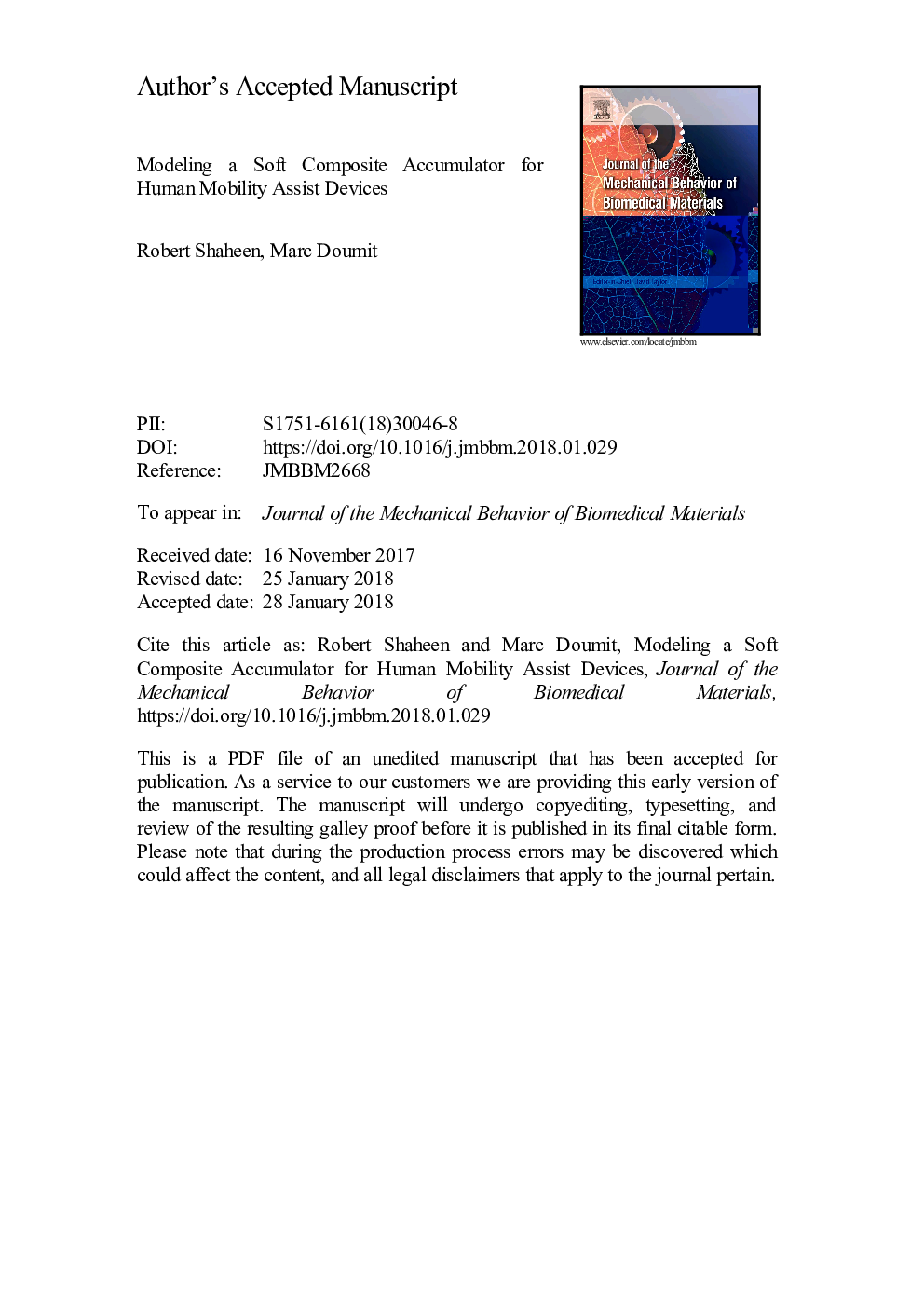| Article ID | Journal | Published Year | Pages | File Type |
|---|---|---|---|---|
| 7207144 | Journal of the Mechanical Behavior of Biomedical Materials | 2018 | 9 Pages |
Abstract
Research in the field of human mobility assist devices, aiming to reduce the metabolic cost of daily activities, is seeing the benefits of the exclusive use of accumulators to store and release energy during the gait cycle. The Pneumatic Artificial Muscle, used in a passive state, has proven to be a superior choice for these devices when compared to its alternatives, however, challenges regarding muscle pressure dissipation and a limited elongation potential have been identified. A recently developed, novel Soft Composite material has been shown to experimentally replicate the distinctive mechanical behaviour of the Pneumatic Artificial Muscle, without the need for internal pressurization. This paper presents two separate constitutive models to provide a closer insight into the behaviour of these Soft Composite accumulators. Both models were derived from methods involving finite elasticity theory and employed either a structural strain energy function of Holzapfel, Gasser, and Ogden's type or a phenomenological strain energy function of Fung's type. Both models were in good agreement with the experimental data that were collected through a modified extension-inflation test and, therefore, provide a basis for further examination as a Soft Composite design model.
Related Topics
Physical Sciences and Engineering
Engineering
Biomedical Engineering
Authors
Robert Shaheen, Marc Doumit,
